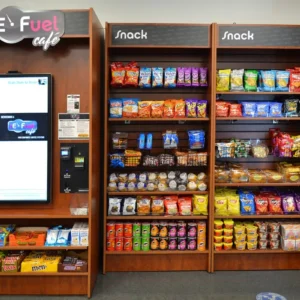The lending industry has seen a major transformation in recent years, driven by technological advancements and changing customer expectations. In today’s competitive financial landscape, speed, accuracy, and customer satisfaction are more critical than ever. To meet these demands, financial institutions are increasingly turning to digital tools such as loan origination systems to streamline their lending processes.
Loan origination systems are specialized software platforms designed to manage the end-to-end loan process. From the moment a borrower applies for a loan to the final disbursement, these systems help lenders automate, monitor, and manage every step involved. As a result, they play a vital role in increasing operational efficiency, reducing costs, and improving the borrower experience.
What Are Loan Origination Systems?
Loan origination systems (LOS) are digital platforms that automate the loan origination process. They handle everything from capturing borrower data and processing applications to conducting credit checks, underwriting, documentation, and final approval.
These systems can be configured to support different types of loans, including personal loans, mortgages, auto loans, business loans, and more. They ensure that every loan application follows a standardized, rule-based process, reducing manual work and the potential for human error.
Key Features of Loan Origination Systems
- Online Loan Applications
LOS platforms enable lenders to offer digital application forms through web and mobile interfaces. Borrowers can submit their information and upload documents from anywhere, improving convenience and accessibility. - Automated Underwriting
Loan origination systems come with built-in underwriting engines that assess applications using predefined criteria. This allows lenders to make quick, data-driven decisions while maintaining consistency. - Credit Bureau Integration
These systems can automatically fetch credit scores and reports from multiple bureaus, reducing processing time and providing accurate credit insights. - Document Management
LOS platforms store and manage all borrower documentation electronically, reducing paper use and simplifying document retrieval and verification. - Compliance and Risk Management
Loan origination systems help institutions comply with industry regulations by enforcing rule-based workflows, generating audit trails, and supporting real-time reporting. - Custom Workflows and Rules
The software can be customized to match a lender’s unique requirements, whether it’s multi-level approvals, risk assessments, or product-specific workflows. - Communication Tools
Automated notifications, alerts, and messaging features keep both borrowers and internal teams updated throughout the loan process.
Benefits of Using Loan Origination Systems
- Faster Loan Processing
One of the most significant advantages of using loan origination systems is the ability to accelerate the entire loan process. Automation reduces turnaround time, enabling lenders to process applications in hours instead of days. - Improved Accuracy
Manual processes are susceptible to data entry errors and inconsistencies. Loan origination systems ensure data accuracy by using validations, pre-filled forms, and real-time checks. - Better Customer Experience
Customers expect a smooth and transparent borrowing experience. LOS platforms offer digital onboarding, instant updates, and faster approvals, all of which contribute to higher satisfaction and trust. - Cost Efficiency
By reducing the need for manual labor, paperwork, and follow-ups, loan origination systems lower operational costs. Lenders can process more loans without increasing staff or resources. - Enhanced Compliance
With increasing regulatory scrutiny, it’s essential for lenders to maintain accurate records and follow strict guidelines. LOS software ensures compliance by automating policy enforcement and generating detailed reports. - Scalable Operations
As a lending institution grows, the number and variety of loan applications also increase. Loan origination systems are designed to scale and handle high volumes efficiently, making them ideal for expanding businesses. - Data-Driven Decision Making
Built-in analytics and reporting tools allow lenders to analyze performance, identify bottlenecks, and make informed business decisions.
Who Needs Loan Origination Systems?
Loan origination systems are valuable for a variety of organizations involved in lending, such as:
- Banks and Credit Unions: To improve operational efficiency and compete with fintech firms.
- Mortgage Lenders: To speed up home loan approvals and remain compliant with real estate regulations.
- Microfinance Institutions: To handle high volumes of small loans with minimal resources.
- Online Lenders and Fintech Startups: To offer fully digital and scalable lending solutions.
- Auto and Consumer Finance Companies: To manage large loan portfolios with automated processing.
Whether you’re a small lender or a large financial institution, adopting a loan origination platform can significantly improve how you manage your lending operations.
Choosing the Right Loan Origination System
Selecting the right system requires a clear understanding of your organization’s needs. Here are key factors to consider:
- Flexibility: Can the system adapt to your existing workflows and loan products?
- Ease of Integration: Does it connect seamlessly with your CRM, accounting, and credit-checking tools?
- Security: Is the system built with strong data encryption, access controls, and backup measures?
- User Experience: Is the platform easy to use for both staff and borrowers?
- Customer Support: Does the vendor provide training, support, and regular updates?
- Cost and ROI: Is the investment justified by the expected efficiency gains and cost savings?
It’s also advisable to request a demo, run a pilot program, and involve stakeholders across departments in the selection process.
The Future of Loan Origination
Loan origination systems are becoming more advanced, incorporating AI and machine learning to enhance risk assessment and fraud detection. Open banking APIs are enabling real-time data sharing, making loan decisions faster and more personalized. Cloud-based platforms are also gaining popularity for their flexibility, lower upfront costs, and easy maintenance.
As digital transformation continues, loan origination systems will play a central role in how financial institutions innovate, scale, and remain competitive in the evolving market.
Conclusion
Loan origination systems are no longer optional—they are essential for any modern lender seeking to stay ahead in a competitive and digital-first environment. By automating workflows, improving data accuracy, and delivering faster services, these systems offer immense value to lenders and borrowers alike. As the demand for digital lending grows, institutions that invest in the right technology today will be better positioned to lead tomorrow.
